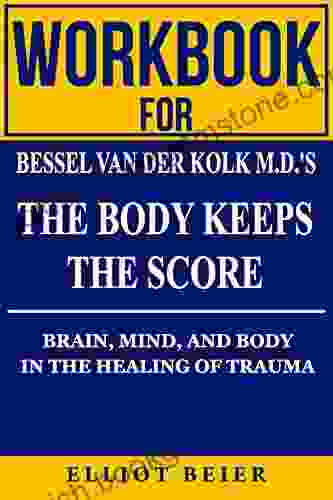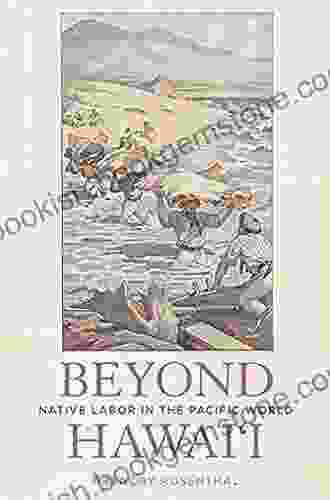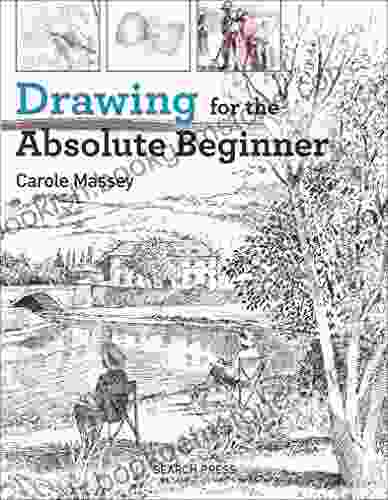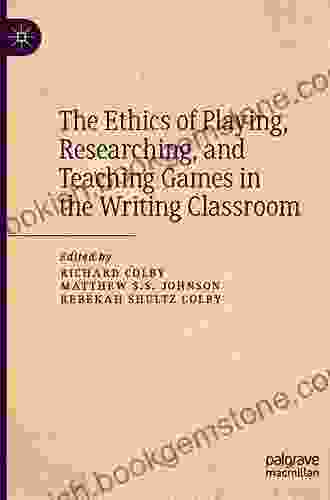Drawing for the Absolute Beginner: A Comprehensive Guide to Mastering the Basics of Art

Drawing is a fundamental skill that can unlock a world of creativity and expression. Whether you're aspiring to become a professional artist or simply want to improve your artistic abilities, starting as a beginner can be an intimidating but rewarding journey. This comprehensive guide will provide you with the essential knowledge and techniques to get you started on your drawing adventures. From understanding the basics of perspective to mastering different drawing styles, we will cover everything you need to know to become a confident and skilled artist.
4.4 out of 5
| Language | : | English |
| File size | : | 49670 KB |
| Screen Reader | : | Supported |
| Print length | : | 128 pages |
| Lending | : | Enabled |
Chapter 1: Understanding the Basics
1.1 Drawing Materials and Equipment
Before you begin drawing, it's important to familiarize yourself with the essential materials and equipment you will need. These include pencils, charcoal, erasers, paper, and drawing boards. Understanding the different types of pencils and their hardness (e.g., HB, 2B, 6B) is crucial for achieving various effects. Paper quality and texture also play a significant role in the outcome of your drawings.

1.2 Perspective and Composition
Understanding perspective is essential for creating realistic and dynamic drawings. Perspective refers to the way objects appear to recede into the distance, creating an illusion of depth. Composition involves arranging elements within your drawing to achieve a balanced and visually appealing effect.
1.3 Basic Drawing Techniques
Mastering basic drawing techniques will lay the foundation for your future artistic endeavors. These techniques include line drawing, shading, blending, and hatching. Line drawing involves creating lines of varying thickness and weight to define shapes and contours. Shading adds depth and volume to your drawings by creating areas of dark and light. Blending softens transitions between different shading values, while hatching uses parallel or crosshatched lines to create shadows and textures.
Chapter 2: Drawing Still Life Objects
2.1 Observing and Measuring
When drawing still life objects, it's important to start by observing them carefully. Take the time to understand their shapes, proportions, and relationships to each other. Using measuring tools can help you accurately capture the size and placement of objects, ensuring realistic representation.
2.2 Capturing Form and Texture
Capturing the form and texture of objects is essential for creating realistic still life drawings. Form refers to the three-dimensional shape of an object, while texture refers to its surface qualities, such as roughness, smoothness, or shininess. Techniques like shading, blending, and hatching can effectively convey form and texture.
2.3 Composition and Background
Composition and background play a crucial role in enhancing the impact of your still life drawings. Experiment with different arrangements of objects and backgrounds to create visually interesting compositions. The background can complement the subject matter, providing context and depth.
Chapter 3: Drawing Landscapes
3.1 Capturing the Horizon and Perspective
Drawing landscapes involves capturing the vastness and depth of the natural world. Understanding the horizon line and applying perspective techniques is essential for creating realistic landscapes. The horizon line separates the sky from the land or water, while perspective helps convey the sense of distance and recession.
3.2 Depicting Trees and Vegetation
Trees and vegetation add life and detail to your landscape drawings. Learn to observe and draw different types of trees, paying attention to their shapes, foliage patterns, and textures. Techniques like hatching and stippling can effectively capture the intricate details and textures of leaves and branches.
3.3 Creating Depth and Atmosphere
Creating depth in your landscape drawings enhances the illusion of space and atmosphere. Use aerial perspective (making colors cooler and values lighter in the distance) and overlapping objects to achieve a sense of depth. Atmosphere can be conveyed through lighting, clouds, fog, or rain, adding drama and mood to your landscapes.
Chapter 4: Drawing Portraits
4.1 Understanding Facial Proportions
Drawing portraits requires a keen understanding of facial proportions. Study the human face and learn the ratios and measurements that determine the correct placement of features like the eyes, nose, mouth, and ears. Understanding these proportions is crucial for capturing a likeness and creating realistic portraits.
4.2 Capturing Facial Expressions
Facial expressions are fundamental to conveying emotion and personality in your portraits. Observe and practice drawing different expressions, focusing on the subtle changes in the muscles and features. Pay attention to the nuances of eyes, eyebrows, and mouth, which can convey a wide range of emotions.
4.3 Lighting and Shading
Lighting plays a vital role in shaping the form and features of a face. Understand how light falls on the face, creating areas of highlight, shadow, and mid-tones. Use shading techniques to accentuate contours, create volume, and convey the effects of lighting.
Chapter 5: Experimenting with Different Drawing Styles
5.1 Realism vs. Expressionism
Explore different drawing styles to find the ones that resonate with your artistic vision. Realism aims to accurately represent the subject matter, while expressionism prioritizes emotions and subjective interpretations. Understanding the characteristics of each style will help you develop your unique artistic voice.
5.2 Charcoal vs. Watercolor
Experiment with various drawing media to discover their unique effects and possibilities. Charcoal allows for bold and expressive marks, while watercolor offers a more delicate and fluid approach. Each medium presents different challenges and opportunities for artistic exploration.
5.3 Digital Drawing vs. Traditional Drawing
In today's digital age, digital drawing has become a popular alternative to traditional drawing methods. Digital drawing tools and software offer a wide range of possibilities, including layers, color adjustments, and the ability to undo and redo effortlessly. Understanding the advantages and limitations of both digital and traditional drawing can help you choose the best approach for your artistic journey.
Drawing is a rewarding and versatile art form that can open doors to creativity and self-expression. By embracing the principles and techniques outlined in this comprehensive guide, you will equip yourself with the knowledge and skills to embark on your drawing adventure with confidence. As you practice and experiment, your drawing abilities will flourish, allowing you to capture the world around you in all its beauty and complexity.
Remember, the journey of drawing is an ongoing process of learning, refinement, and personal growth. Embrace the challenges along the way, seek inspiration from other artists, and never cease to explore and develop your artistic vision. With dedication and passion, you will unlock the full potential of your drawing abilities and create stunning works of art that reflect your unique voice and perspective.
4.4 out of 5
| Language | : | English |
| File size | : | 49670 KB |
| Screen Reader | : | Supported |
| Print length | : | 128 pages |
| Lending | : | Enabled |
Do you want to contribute by writing guest posts on this blog?
Please contact us and send us a resume of previous articles that you have written.
 Best Book
Best Book Page Flip
Page Flip Bookshelf
Bookshelf Literary loom
Literary loom Chapter
Chapter Bookish
Bookish PageTurner
PageTurner Bibliophile
Bibliophile Story
Story Inkwell
Inkwell Bookworm
Bookworm Labyrinth
Labyrinth Plot Twist
Plot Twist Prose
Prose Paperback
Paperback Storyteller
Storyteller Sanctuary
Sanctuary Fiction
Fiction Reading
Reading Chronicle
Chronicle Read
Read Talk In Italian
Talk In Italian Trevor Carroll
Trevor Carroll Jim Forest
Jim Forest Tasha Black
Tasha Black Peter Bone
Peter Bone Reginald F Lewis
Reginald F Lewis Tom Fay
Tom Fay William Alexander Percy
William Alexander Percy Tim Severin
Tim Severin Pilar M Herr
Pilar M Herr Neal Adams
Neal Adams Laura Reiter
Laura Reiter Matt Gilbert
Matt Gilbert Joyce Huber
Joyce Huber Elliot Beier
Elliot Beier Marie Mutsuki Mockett
Marie Mutsuki Mockett Walter Mosley
Walter Mosley Richard Fleischer
Richard Fleischer Lorrie Morocha
Lorrie Morocha Diana Kupershmit
Diana Kupershmit Stuart Douglas
Stuart Douglas Richard Feinberg
Richard Feinberg Sosha Davis
Sosha Davis Thibault Ehrengardt
Thibault Ehrengardt Vicki Rozema
Vicki Rozema Trova Heffernan
Trova Heffernan Russ Howard
Russ Howard Donald J Trump
Donald J Trump Stephen Kirkpatrick
Stephen Kirkpatrick Derek Baxter
Derek Baxter Kim Kavin
Kim Kavin Sue Black
Sue Black Keiko Okamoto
Keiko Okamoto Robert Henri
Robert Henri Maria Morera Johnson
Maria Morera Johnson Meniere Man
Meniere Man Candice Marie Benbow
Candice Marie Benbow K Alex Walker
K Alex Walker Mahi Wasfy
Mahi Wasfy Monica Huerta
Monica Huerta Julia Walker
Julia Walker Jonathan Smidt
Jonathan Smidt David Baldacci
David Baldacci Deaver Brown
Deaver Brown Joann Perahia
Joann Perahia Richard Delacy
Richard Delacy Oprah Winfrey
Oprah Winfrey Ed Gillis
Ed Gillis Norman Bryson
Norman Bryson Norman Lebrecht
Norman Lebrecht Scott David Plumlee
Scott David Plumlee Ping Fu
Ping Fu Mayukh Sen
Mayukh Sen Victoria Charles
Victoria Charles Jeff Shaara
Jeff Shaara Ward Eister
Ward Eister Joe Kuster
Joe Kuster Kay Redfield Jamison
Kay Redfield Jamison Jenny Bowen
Jenny Bowen Nikita Thorn
Nikita Thorn Nathan Riley
Nathan Riley Jenny Lawson
Jenny Lawson Robert Macklin
Robert Macklin Lou Darvas
Lou Darvas Margo Bond Collins
Margo Bond Collins Paula Henriksen
Paula Henriksen S L Osborne
S L Osborne Patti Bellantoni
Patti Bellantoni Roland L Mcintosh
Roland L Mcintosh Cath Caldwell
Cath Caldwell Mick Huerta
Mick Huerta Steve Alpert
Steve Alpert Dave Brett
Dave Brett Harold Green Iii
Harold Green Iii Learning Through Play
Learning Through Play Mariko Higaki
Mariko Higaki Nien Cheng
Nien Cheng Mary Carolyn Waldrep
Mary Carolyn Waldrep Sally Blake
Sally Blake Paolo Bacigalupi
Paolo Bacigalupi Naveed Rouhani
Naveed Rouhani Lisa Brahin
Lisa Brahin Maria Augusta Trapp
Maria Augusta Trapp Tony Morgan
Tony Morgan Christopher Reeve
Christopher Reeve Ruben Gallego
Ruben Gallego Don Peri
Don Peri Yatir Nitzany
Yatir Nitzany Grace Lee Boggs
Grace Lee Boggs Sonja Mejcher Atassi
Sonja Mejcher Atassi 1st Ed 2018 Edition Kindle Edition
1st Ed 2018 Edition Kindle Edition Stephen Saad
Stephen Saad Ellis Cose
Ellis Cose Lian Quan Zhen
Lian Quan Zhen Steve Glassman
Steve Glassman Jonah Mcdonald
Jonah Mcdonald Sam Shepard
Sam Shepard Mary Heron Dyer
Mary Heron Dyer Marteeka Karland
Marteeka Karland Connie Easton
Connie Easton Ilana Benady
Ilana Benady Kelly Gay
Kelly Gay William C Cline
William C Cline Sharmila Sen
Sharmila Sen Manuel Huitzilli
Manuel Huitzilli Yelapa Memo
Yelapa Memo Nadia Owusu
Nadia Owusu Travis Bagwell
Travis Bagwell Sonia Moore
Sonia Moore Platte Productions Llc
Platte Productions Llc Joyce Roa
Joyce Roa Shani Greene Dowdell
Shani Greene Dowdell 1st Ed 2019 Edition Kindle Edition
1st Ed 2019 Edition Kindle Edition Nicole Casey
Nicole Casey Vivian Gibson
Vivian Gibson Mark Odegard
Mark Odegard Charles Ney
Charles Ney James Hunter
James Hunter William Gibson
William Gibson Sally J Pla
Sally J Pla Christopher Lane
Christopher Lane Joseph Johnson
Joseph Johnson John Davidson
John Davidson Tova Rabinowitz
Tova Rabinowitz Richard Matheson
Richard Matheson Loung Ung
Loung Ung Patrice Pavis
Patrice Pavis Sean Robins
Sean Robins Mary Matsuda Gruenewald
Mary Matsuda Gruenewald Theo Hodges
Theo Hodges Megan Marshall
Megan Marshall Tony Dungy
Tony Dungy Dk Eyewitness
Dk Eyewitness Eliot Schrefer
Eliot Schrefer James Ernest Shaw
James Ernest Shaw Lincoln Michel
Lincoln Michel Skip Mort
Skip Mort Paul Greenhalgh
Paul Greenhalgh Print Replica Kindle Edition
Print Replica Kindle Edition Roger Cowell
Roger Cowell Bruce Spydar
Bruce Spydar Manuel Lima
Manuel Lima Zondervan
Zondervan Plutarch
Plutarch Manny Serrato
Manny Serrato Richard Ross
Richard Ross Neil Fontaine
Neil Fontaine Jason A Ramos
Jason A Ramos Svenja Reidelbach
Svenja Reidelbach Delphi Classics
Delphi Classics Matthew Israel
Matthew Israel Duncan James
Duncan James Jl Seegars
Jl Seegars Philip K Dick
Philip K Dick Lisa Smith
Lisa Smith Malcolm C Salaman
Malcolm C Salaman Myrnoska Scott
Myrnoska Scott Richard Butner
Richard Butner James Graham Baker
James Graham Baker Kyriacos C Markides
Kyriacos C Markides Sherri Granato
Sherri Granato Neal Stephenson
Neal Stephenson Reanne Hemingway Douglass
Reanne Hemingway Douglass Yuliia Pozniak
Yuliia Pozniak Randi Minetor
Randi Minetor Jessica Fanigliulo
Jessica Fanigliulo Lewis Smile
Lewis Smile Caroline Eden
Caroline Eden Tim Wootton
Tim Wootton Marcus Samuelsson
Marcus Samuelsson Philip Ball
Philip Ball Russell Means
Russell Means Jodi Bombardier
Jodi Bombardier Rem Koolhaas
Rem Koolhaas Sherryl Woods
Sherryl Woods Stephen Coles
Stephen Coles Kathy Barnette
Kathy Barnette Matt Patterson
Matt Patterson Steve Stevenson
Steve Stevenson Sangeeta Prasad
Sangeeta Prasad Laylah Roberts
Laylah Roberts Emily Byrne Curtis
Emily Byrne Curtis Tim Gallagher
Tim Gallagher Korani Connolly
Korani Connolly Julia Fowler
Julia Fowler Rebecca Kobrin
Rebecca Kobrin Luis J Rodriguez
Luis J Rodriguez Ronald Bergan
Ronald Bergan Robert Finch
Robert Finch Sonja B
Sonja B John Pomfret
John Pomfret Matthew Bourne
Matthew Bourne Sheila Watt Cloutier
Sheila Watt Cloutier Clara Nieto
Clara Nieto K Wan
K Wan Yishan Li
Yishan Li Kathy Cano Murillo
Kathy Cano Murillo Katie Dowe
Katie Dowe Brenda Lyons
Brenda Lyons Nicholas Sparks
Nicholas Sparks Robin Rainbow Gate
Robin Rainbow Gate Tanya Talaga
Tanya Talaga John Thompson
John Thompson John Paul Stonard
John Paul Stonard Usman Zafar Paracha
Usman Zafar Paracha Laurinda Reddig
Laurinda Reddig Scape Martinez
Scape Martinez Tapirus
Tapirus Victoria Rivera Mckinley
Victoria Rivera Mckinley Joshua James
Joshua James Priscilla Batzell
Priscilla Batzell Marcello Di Cintio
Marcello Di Cintio Martha Hall Kelly
Martha Hall Kelly John Donohue
John Donohue Q David Bowers
Q David Bowers Mary M Lane
Mary M Lane Richard S Dunn
Richard S Dunn Tom Cotter
Tom Cotter Nia Arthurs
Nia Arthurs Rough Guides
Rough Guides Richard J Powell
Richard J Powell Megan Goldmine
Megan Goldmine Margo Jefferson
Margo Jefferson Akire C
Akire C John Muir
John Muir William Lidwell
William Lidwell Neil Bimbeau
Neil Bimbeau Requiem Scolopendra
Requiem Scolopendra Peter L Phillips
Peter L Phillips Steve Van Beek
Steve Van Beek Will Jawando
Will Jawando Letitia Shelton
Letitia Shelton Michael F Steltenkamp
Michael F Steltenkamp Phil Cleaver
Phil Cleaver Samra Habib
Samra Habib Lindy Viandier
Lindy Viandier Patty A Wilson
Patty A Wilson Paige R Penland
Paige R Penland Kassia St Clair
Kassia St Clair N K Jemisin
N K Jemisin Sarah Abrevaya Stein
Sarah Abrevaya Stein Rosayra Pablo Cruz
Rosayra Pablo Cruz Ketut Suasti
Ketut Suasti Sister Souljah
Sister Souljah Katherine Addison
Katherine Addison Stephen King
Stephen King Lauren Graham
Lauren Graham Rosalind K Marshall
Rosalind K Marshall Tonya Burrows
Tonya Burrows Nisha Garg
Nisha Garg Lisa Maker
Lisa Maker M A Rothman
M A Rothman Nicki Thornton
Nicki Thornton Mark Padilla
Mark Padilla Wes Hubert
Wes Hubert Charles B Gatewood
Charles B Gatewood Carl E Schorske
Carl E Schorske Dean Koontz
Dean Koontz Luis Angel Echeverria
Luis Angel Echeverria Nicholas Wapshott
Nicholas Wapshott Bernth Lindfors
Bernth Lindfors Rosemary Mahoney
Rosemary Mahoney Diane Chamberlain
Diane Chamberlain Shani Mootoo
Shani Mootoo Insight Guides
Insight Guides Graeme Swann
Graeme Swann Meredith Dillman
Meredith Dillman Bernadette Simpson
Bernadette Simpson Laura Lee Fritz
Laura Lee Fritz Kenan Trebincevic
Kenan Trebincevic K C Mills
K C Mills Sarah Vallance
Sarah Vallance Nathan Mccall
Nathan Mccall Eamon Evans
Eamon Evans Tobias Zimmermann
Tobias Zimmermann Kristina Mcmorris
Kristina Mcmorris Marcy Conway
Marcy Conway Vic Shayne
Vic Shayne Tim Testu
Tim Testu Madhushree Ghosh
Madhushree Ghosh Philippa Ballantine
Philippa Ballantine Saul Tanpepper
Saul Tanpepper Katie Middleton
Katie Middleton Klas Kristiansson
Klas Kristiansson Meir Shalev
Meir Shalev Brian Kevin
Brian Kevin William Carroll
William Carroll Richard Lippe
Richard Lippe Liz Chaderton
Liz Chaderton Luke Chmilenko
Luke Chmilenko John Dvorak
John Dvorak S G Seabourne
S G Seabourne Magdalena Matulewicz
Magdalena Matulewicz Jesse Thistle
Jesse Thistle Marie Louise Gay
Marie Louise Gay Mary Stuart
Mary Stuart Kim Hutchinson
Kim Hutchinson Christopher Reutinger
Christopher Reutinger Pamela Cutter
Pamela Cutter Jubilee Brown
Jubilee Brown Oscar Owen
Oscar Owen Julian Rothenstein
Julian Rothenstein Rebecca Roanhorse
Rebecca Roanhorse Ryan Roenfeld
Ryan Roenfeld Kitty Williams
Kitty Williams John Lewis Burckhardt
John Lewis Burckhardt Chika Okeke Agulu
Chika Okeke Agulu Kennedy Ryan
Kennedy Ryan Liz Scheier
Liz Scheier David Kadavy
David Kadavy Stephanie Nicole Norris
Stephanie Nicole Norris Mladen Sutej
Mladen Sutej Shelley Shepard Gray
Shelley Shepard Gray Miriam Giguere
Miriam Giguere Phoenix Grey
Phoenix Grey Sam Crescent
Sam Crescent Joseph Toone
Joseph Toone Kindle Comixology
Kindle Comixology Kathy Valentine
Kathy Valentine Sarah Valentine
Sarah Valentine Tom Sito
Tom Sito David Roberts
David Roberts Mike Joyce
Mike Joyce Simona Merchant Dest
Simona Merchant Dest Mark T Conard
Mark T Conard Patty Jansen
Patty Jansen Johno Ellison
Johno Ellison Pauli Murray
Pauli Murray Julie Beemer
Julie Beemer Bob Santos
Bob Santos Steven Skaggs
Steven Skaggs Kenneth Ma
Kenneth Ma Michael Friel
Michael Friel Sharon Mckee
Sharon Mckee Kim Barker
Kim Barker Mau Kun Yim
Mau Kun Yim Breanna De Shay
Breanna De Shay Pat Dews
Pat Dews Larry Taylor
Larry Taylor Graham Cole
Graham Cole Tom Brosnahan
Tom Brosnahan Lucy Moore
Lucy Moore Paul Seydor
Paul Seydor Patrick Drazen
Patrick Drazen Natalie Hodges
Natalie Hodges Jeff W Bens
Jeff W Bens Janice Tingum
Janice Tingum Nolan Clark
Nolan Clark Joel Sonnenberg
Joel Sonnenberg Jean Guerrero
Jean Guerrero Steve Gordon Jr
Steve Gordon Jr Daniel Silva
Daniel Silva Nancy Princenthal
Nancy Princenthal Matthew Stavros
Matthew Stavros Lisa See
Lisa See Warren Dotz
Warren Dotz Nicole Pivirotto
Nicole Pivirotto David Cummings
David Cummings 1st Ed 2016 Edition
1st Ed 2016 Edition Mark Strand
Mark Strand Timothy S Susanin
Timothy S Susanin Joseph Judson Dimock
Joseph Judson Dimock Bwwm Club
Bwwm Club Marianna Leivaditaki
Marianna Leivaditaki Megan Carr
Megan Carr Daniel Connolly
Daniel Connolly Tanja Jung
Tanja Jung Laird Barron
Laird Barron Stan Tekiela
Stan Tekiela W R Tymms
W R Tymms Shaopeng Chen
Shaopeng Chen Yuniya Kawamura
Yuniya Kawamura Lisa Congdon
Lisa Congdon Karma Waltonen
Karma Waltonen Honesty Price
Honesty Price Silvana Paternostro
Silvana Paternostro Judy Bolton Fasman
Judy Bolton Fasman Raquel Cepeda
Raquel Cepeda Lily Fulop
Lily Fulop David J Schmidt
David J Schmidt Svetlana Quindt
Svetlana Quindt Kindle Edition
Kindle Edition Joseph Beuys
Joseph Beuys Donna Williams
Donna Williams Violet Ramis Stiel
Violet Ramis Stiel Margaret C Collier
Margaret C Collier Jim Santos
Jim Santos David Hopkins
David Hopkins Martin Gardner
Martin Gardner Helm Wotzkow
Helm Wotzkow Didier Ghez
Didier Ghez Miriam F Williams
Miriam F Williams Michelle Jackson
Michelle Jackson Nick Axel
Nick Axel Bill Arnott
Bill Arnott Richard Fidler
Richard Fidler Lynn Garafola
Lynn Garafola David Paleschuck
David Paleschuck Tom Sterling
Tom Sterling Mark Lane
Mark Lane Mary Breu
Mary Breu Tricia Rose
Tricia Rose Dakota Krout
Dakota Krout Timothy Brook
Timothy Brook Maureen Hughes
Maureen Hughes Jonathan D Sarna
Jonathan D Sarna Joel Stratte Mcclure
Joel Stratte Mcclure Jessica Glasscock
Jessica Glasscock Michael Psellus
Michael Psellus Michael A Hoey
Michael A Hoey James J Downes
James J Downes Various
Various Vladimir Geroimenko
Vladimir Geroimenko Daniel Gibbs
Daniel Gibbs Ursa Dax
Ursa Dax Karl Ove Knausgaard
Karl Ove Knausgaard William R Forstchen
William R Forstchen Vincent Van Gogh
Vincent Van Gogh Robbie Quinn
Robbie Quinn Javy Lopez
Javy Lopez Philip Stewart
Philip Stewart Mimi Grace
Mimi Grace Francis Tipene
Francis Tipene John Carey Cremony
John Carey Cremony Kate Bryan
Kate Bryan Paul Chiasson
Paul Chiasson Sergio Toppi
Sergio Toppi Jerzy Kosinski
Jerzy Kosinski Robert B Parker
Robert B Parker Greg Gutfeld
Greg Gutfeld Jo Thomas
Jo Thomas Julia Summerfield
Julia Summerfield Tim Moss
Tim Moss Stefan Pabst
Stefan Pabst Mary Boone
Mary Boone Vowron Prime
Vowron Prime John Wesley Powell
John Wesley Powell Molly Haskell
Molly Haskell Kim Catron
Kim Catron Katy Sprinkel
Katy Sprinkel Hope Edelman
Hope Edelman John Fabian Carlson
John Fabian Carlson Will Stovall
Will Stovall Blair Davis
Blair Davis Rachel Shirley
Rachel Shirley Monica L Miller
Monica L Miller Liz Hurley
Liz Hurley Deborah Willis
Deborah Willis John Wyndham
John Wyndham Momtaz Begum Hossain
Momtaz Begum Hossain Linda Keteyian
Linda Keteyian Lauren Beukes
Lauren Beukes Patrick Herrendorf
Patrick Herrendorf Toni Morrison
Toni Morrison Robert Knott
Robert Knott Marc Cameron
Marc Cameron Michael R Jackson
Michael R Jackson Robert Rummel Hudson
Robert Rummel Hudson Suzanne Fredericq
Suzanne Fredericq Paul Noble
Paul Noble Kathryn Aalto
Kathryn Aalto Alyssa Campbell
Alyssa Campbell Shelly Kim
Shelly Kim Molly Bang
Molly Bang Sesali Bowen
Sesali Bowen Larisa Golubeva
Larisa Golubeva Daniel James Brown
Daniel James Brown Richard W Pointer
Richard W Pointer Katharine Branning
Katharine Branning Holly Madison
Holly Madison Krystyna Chiger
Krystyna Chiger Carly Murden
Carly Murden Mariam Elias
Mariam Elias William Shatner
William Shatner Kayla Watkins
Kayla Watkins Kait Fennell
Kait Fennell Rick Goldschmidt
Rick Goldschmidt Alicia Beckton
Alicia Beckton 1st Edition Kindle Edition
1st Edition Kindle Edition Xander Boyce
Xander Boyce John L Turner
John L Turner Kelcey Coe
Kelcey Coe Ruth Reichl
Ruth Reichl Jerry Saltz
Jerry Saltz Renia Spiegel
Renia Spiegel Ruby Dixon
Ruby Dixon Mike Grist
Mike Grist M C Roberts
M C Roberts Steven G Krantz
Steven G Krantz Sawyer Black
Sawyer Black Wallace Terry
Wallace Terry Norman M Shulman
Norman M Shulman Martina Carracedo
Martina Carracedo Tricia Martineau Wagner
Tricia Martineau Wagner Rajat Gupta
Rajat Gupta Steven W Naifeh
Steven W Naifeh Kerry Bogert
Kerry Bogert Ken Budd
Ken Budd Julian May
Julian May William W Johnstone
William W Johnstone Taylor Mason
Taylor Mason Nick Barratt
Nick Barratt William Hertling
William Hertling Mark C Childs
Mark C Childs T Stonefield
T Stonefield Elle Wright
Elle Wright Kenneth Laws
Kenneth Laws Margaret Eggleton
Margaret Eggleton Milind Mulick
Milind Mulick I C Robledo
I C Robledo Ashley Jaquavis
Ashley Jaquavis Tammy Ruggles
Tammy Ruggles Mimi Thorisson
Mimi Thorisson Shaka Senghor
Shaka Senghor Daniel Schinhofen
Daniel Schinhofen Bill Rumpel
Bill Rumpel Noah Hurowitz
Noah Hurowitz James Mcbride
James Mcbride Kristin Harmel
Kristin Harmel Lara Quaranta
Lara Quaranta Peter Mayle
Peter Mayle Richard Paul Russo
Richard Paul Russo Scott Brown
Scott Brown Odie Hawkins
Odie Hawkins Robert M Goldstein
Robert M Goldstein Russell Zimmerman
Russell Zimmerman Tom Larcombe
Tom Larcombe Tamsin Ley
Tamsin Ley Shemer Kuznits
Shemer Kuznits Jon Contino
Jon Contino Calum Best
Calum Best Linda Rodriguez Mcrobbie
Linda Rodriguez Mcrobbie Megan Wells
Megan Wells Robert Gottlieb
Robert Gottlieb Tiya Rayne
Tiya Rayne Wesley Gardner
Wesley Gardner Andrew Cunningham
Andrew Cunningham Paul Thimou
Paul Thimou Marlena De Blasi
Marlena De Blasi Giovanni Iannoni
Giovanni Iannoni Tim Anderson
Tim Anderson Richard D Fisher
Richard D Fisher Ben Box
Ben Box Rayna Denison
Rayna Denison Sharon Stone
Sharon Stone Kale James
Kale James Julie Yip Williams
Julie Yip Williams Omar Sharif Jr
Omar Sharif Jr Marcos Mateu Mestre
Marcos Mateu Mestre 1st Ed 2021 Edition Kindle Edition
1st Ed 2021 Edition Kindle Edition Michael Oher
Michael Oher Deborah Fallows
Deborah Fallows Paul A Moua
Paul A Moua Renee Rose
Renee Rose Karen Lewis
Karen Lewis Nik Mahon
Nik Mahon Azim Nanji
Azim Nanji Sally Howard
Sally Howard Shlomo Avineri
Shlomo Avineri Mary Beard
Mary Beard Emma Dabiri
Emma Dabiri Regina Clarke
Regina Clarke Tyora Moody
Tyora Moody Andre Henry
Andre Henry Paul Strathern
Paul Strathern Sean Platt
Sean Platt Kagan Mcleod
Kagan Mcleod William Evans
William Evans Joel Shepherd
Joel Shepherd Philip Lee
Philip Lee Kevin Henry
Kevin Henry Simon R Green
Simon R Green Joe R Lansdale
Joe R Lansdale Kimberly Smith
Kimberly Smith Ulrike Fuchs
Ulrike Fuchs Anne H Berry
Anne H Berry David S Luton
David S Luton Michael Smith
Michael Smith Ted Bell
Ted Bell Kristina Harris
Kristina Harris Anne Manera
Anne Manera Cathy Johnson
Cathy Johnson Miranda Bridges
Miranda Bridges Victor Steffensen
Victor Steffensen W David Baird
W David Baird Louis L Amour
Louis L Amour Sian Pritchard Jones
Sian Pritchard Jones Robyn Carr
Robyn Carr Miranda July
Miranda July Patrice Gopo
Patrice Gopo 1st Ed 2020 Edition Kindle Edition
1st Ed 2020 Edition Kindle Edition Nic Oatridge
Nic Oatridge Taniela Tabu
Taniela Tabu Steve Cohen
Steve Cohen Graham Rowley
Graham Rowley Patrick Mcgilligan
Patrick Mcgilligan W Kamau Bell
W Kamau Bell Robert Evans
Robert Evans Marcelo Hernandez Castillo
Marcelo Hernandez Castillo Ton Viet Ta
Ton Viet Ta Tracy Lash Decrosta
Tracy Lash Decrosta William L Fox
William L Fox Vaughn Heppner
Vaughn Heppner Sonia Faleiro
Sonia Faleiro Ari Goldberg
Ari Goldberg Jessica Garrison
Jessica Garrison Manifestation Publishing House
Manifestation Publishing House W Glenn Griffin
W Glenn Griffin Johanna Lehner
Johanna Lehner Aer Ki Jyr
Aer Ki Jyr Tony Walsh
Tony Walsh Robin Hobb
Robin Hobb Jennifer Wright
Jennifer Wright Ryan Dempsey
Ryan Dempsey Regine Abel
Regine Abel W Somerset Maugham
W Somerset Maugham Julia Child
Julia Child Christian Blauvelt
Christian Blauvelt Niobia Bryant
Niobia Bryant Roger Zelazny
Roger Zelazny Katherine Le Kang
Katherine Le Kang Joy Horowitz
Joy Horowitz Lauren Scruggs
Lauren Scruggs Pero Tafur
Pero Tafur Jonathan Clements
Jonathan Clements Dan X Solo
Dan X Solo Burst Books
Burst Books James Hall
James Hall Kathleen Smith
Kathleen Smith Mike Lowery
Mike Lowery Matthew Hahn
Matthew Hahn Baratunde Thurston
Baratunde Thurston Stephanie Mehta
Stephanie Mehta Leo W Chang
Leo W Chang Lesley Riley
Lesley Riley Jeff Mellem
Jeff Mellem David Batchelor
David Batchelor Alan R Hauser
Alan R Hauser Veronica G Henry
Veronica G Henry Kamal Saleem
Kamal Saleem Joan Breton Connelly
Joan Breton Connelly Yuko Green
Yuko Green
Light bulbAdvertise smarter! Our strategic ad space ensures maximum exposure. Reserve your spot today!

 Michael SimmonsUnleash Your Inner Artist: Dive into the Enchanting World of Excellent Manga...
Michael SimmonsUnleash Your Inner Artist: Dive into the Enchanting World of Excellent Manga... Michael ChabonFollow ·6.6k
Michael ChabonFollow ·6.6k Franklin BellFollow ·4.2k
Franklin BellFollow ·4.2k Cade SimmonsFollow ·9.6k
Cade SimmonsFollow ·9.6k Art MitchellFollow ·13.4k
Art MitchellFollow ·13.4k Wayne CarterFollow ·6.2k
Wayne CarterFollow ·6.2k Ed CooperFollow ·15.6k
Ed CooperFollow ·15.6k Dalton FosterFollow ·2.2k
Dalton FosterFollow ·2.2k Ralph EllisonFollow ·8.5k
Ralph EllisonFollow ·8.5k

 Marvin Hayes
Marvin HayesBarn Find Road Trip: Unearthing Hidden Automotive...
In the realm of automotive...

 Griffin Mitchell
Griffin MitchellWorkbook for Bessel van der Kolk's "The Body Keeps the...
Trauma is a pervasive issue that affects...

 Kevin Turner
Kevin TurnerExploring the Enchanting Islands of Puerto Rico:...
Embark on an...

 Mike Hayes
Mike HayesDiscover Santa Fe's Enchanting Charm with the DK...
Nestled at the foot of the...

 Colby Cox
Colby CoxConversational Arabic Quick and Easy: Yemeni Arabic...
Welcome to the exciting...

 Davion Powell
Davion PowellNative Labor in the Pacific World: A Comprehensive...
The Pacific World, encompassing the vast...
4.4 out of 5
| Language | : | English |
| File size | : | 49670 KB |
| Screen Reader | : | Supported |
| Print length | : | 128 pages |
| Lending | : | Enabled |










